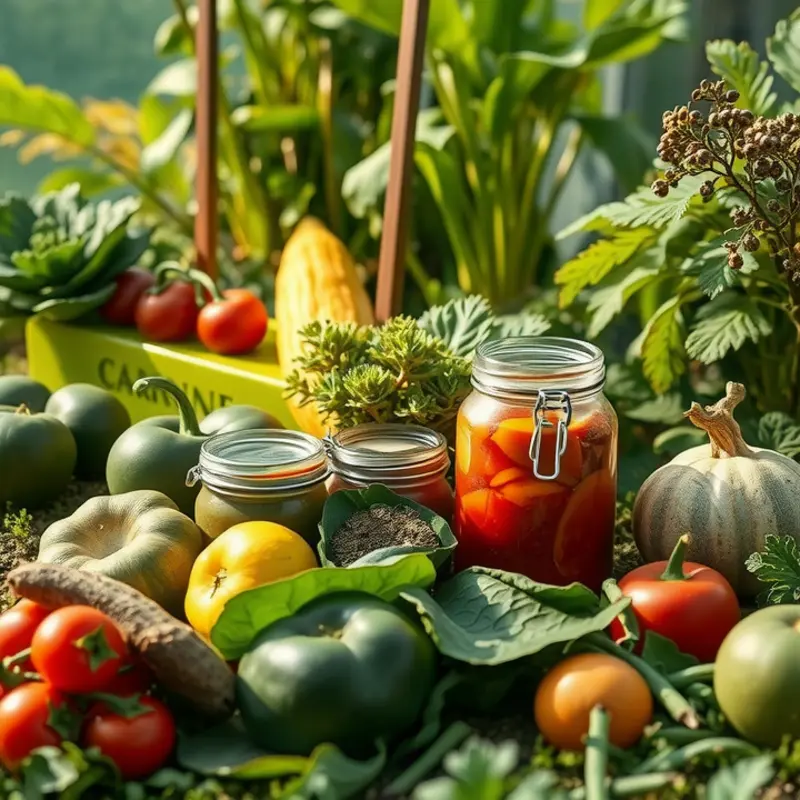Home cooking can be both delicious and healthy. For those avoiding vinegar due to dietary restrictions or personal preference, there are a variety of alternatives that bring acidity and depth to your meals. This guide explores practical substitutions that not only maintain the flavor profile of recipes but also offer unique and vibrant options to enhance your culinary creations. Embrace the art of cooking with a twist!
Citrus: A Zesty Replacement

Citrus fruits offer an invigorating twist to your culinary creations, serving as a vibrant alternative to vinegar. Lemons, limes, and oranges are rich in acidity, providing the tang you need to bring life to dishes without overwhelming them. By leveraging these fruits, you can achieve a balance of flavor that makes each bite a refreshing experience.
Incorporating citrus starts with understanding its versatility. Lemons, for instance, are a natural way to add brightness to salad dressings. A simple squeeze of fresh lemon juice over leafy greens, whisked with olive oil, mustard, and herbs, results in a dressing that is both light and flavorful. Such mixtures are ideal for those preferring a vinegar-free culinary approach, maintaining the needed acidity while enhancing the natural taste of the greens.
Citrus is also your ally in marinades. Limes, known for their sharp and tart profile, can penetrate meats and vegetables with ease, making them tender and flavor-infused. When marinating chicken or tofu, lime juice combined with garlic and cayenne pepper adds depth without the need for vinegar. Allow the ingredients to soak for at least an hour—or overnight for a richer taste—to fully appreciate the zesty benefits.
Exploring the sweeter side, oranges are perfect for desserts. The zest and juice of an orange can transform a basic caramel sauce into a unique topping for cakes and ice creams. The citrus undertones balance the sweetness, creating a sophisticated palate. To impress dinner guests, a simple orange-infused chocolate mousse offers an elegant touch, marrying rich cocoa with subtle citrus flare.
Citrus is not just for the direct taste but also for its aroma, which adds an invisible layer of sensory satisfaction. When preparing sauces, consider adding a teaspoon of lime or lemon zest. It perks up the sauce without adding moisture, ideal for simmering concoctions like tomato-based sauces for pasta. For tips on easy sauce simmering techniques, visit our guide.
Preservation is another area where citrus excels. A splash of lemon or lime juice can help in maintaining the vibrant colors of exposed fruits and vegetables, reducing oxidation. Thus, they are often employed in fruit salads or guacamole, not just for taste but also their preservative qualities.
Ultimately, the choice to use citrus as a vinegar substitute opens up a world of complex and delightful flavors. It’s about crafting a taste profile where acidity doesn’t overshadow but enhances, where the natural sweetness of the fruit plays a harmonious duet with the tartness. As you experiment, you’ll discover how these natural elements breathe new life into your favorite dishes, making them both memorable and delicious.
Fermented Options: Embrace the Funk

When crafting dishes without traditional vinegar, fermented ingredients provide a lively alternative. They offer a complex tang and depth that elevate meals across various cuisines.
Kimchi, the Korean staple, is a riot of flavors. Its unique combination of spicy, tangy, and slightly sweet notes can transform a bland dish into something with remarkable depth. You can finely chop kimchi and incorporate it into stir-fries or as a topping on grain bowls to add both texture and flavor. Beyond traditional Asian cuisine, kimchi’s acidity balances rich dishes, making it an excellent pairing with meats like pork or beef.
Miso is another powerhouse ingredient. This fermented soybean paste varies in flavor from mild and sweet to intense and salty. Incorporating miso into your cooking adds not only saltiness but a profound umami. A simple way to use miso is by mixing it into dressings or sauces. You can whisk a spoonful into vinaigrettes or creamy dressings for salads, adding complexity without vinegar. It can also be blended into marinades for fish or chicken, offering a nuanced savory backdrop.
Yogurt, a more familiar fermented component, underscores the tanginess while delivering creaminess. A dollop of yogurt in curries or soups can temper heat, add richness, and introduce slight tartness similar to vinegar. It’s also a versatile base for dressings—when whisked with herbs, garlic, and a squeeze of lemon, yogurt can create a vibrant salad dressing without the need for vinegar.
These fermented ingredients not only provide acidity but also introduce probiotic benefits to your diet. Homemade pickles using fermented brines bring a crunchy and tangy note ideal for side dishes or toppings, without any vinegar in sight. For those with dietary restrictions or preferences for non-dairy options, fermented foods like kimchi and miso serve as excellent alternatives. For more on non-dairy probiotics, check out this guide to non-dairy probiotics.
Incorporating fermented foods into cooking requires a balance between their robust flavors and the other elements in the dish. It’s crucial to start with small amounts and adjust according to taste. As you grow more comfortable using them, you’ll discover their versatility beyond just replacing vinegar. Fermented ingredients can act as global flavor connectors, enhancing everything from American to Mediterranean cuisines, allowing the natural funk of fermentation to shine through in delightful ways.
Final words
Finding alternatives to vinegar not only expands your pantry but also enhances your culinary repertoire. Citrus fruits can enliven your dressings and marinades with zesty brightness, while fermented foods infuse your dishes with depth and complexity. By experimenting with these vinegar-free options, you’ll discover a world of flavor that caters to your dietary needs and enhances your home cooking. Embrace these substitutions, and don’t be afraid to experiment – your dishes are bound to shine with this fresh approach!






